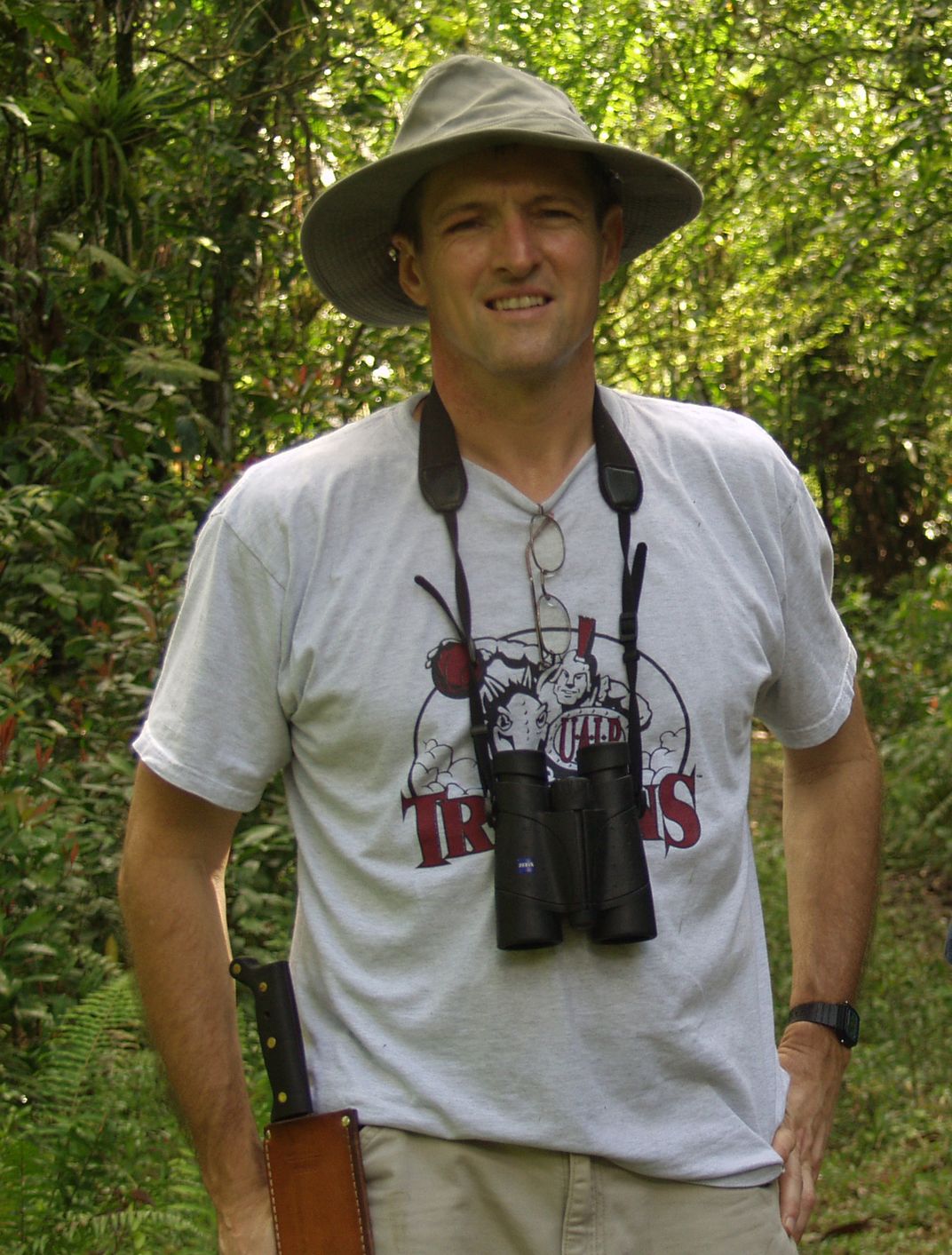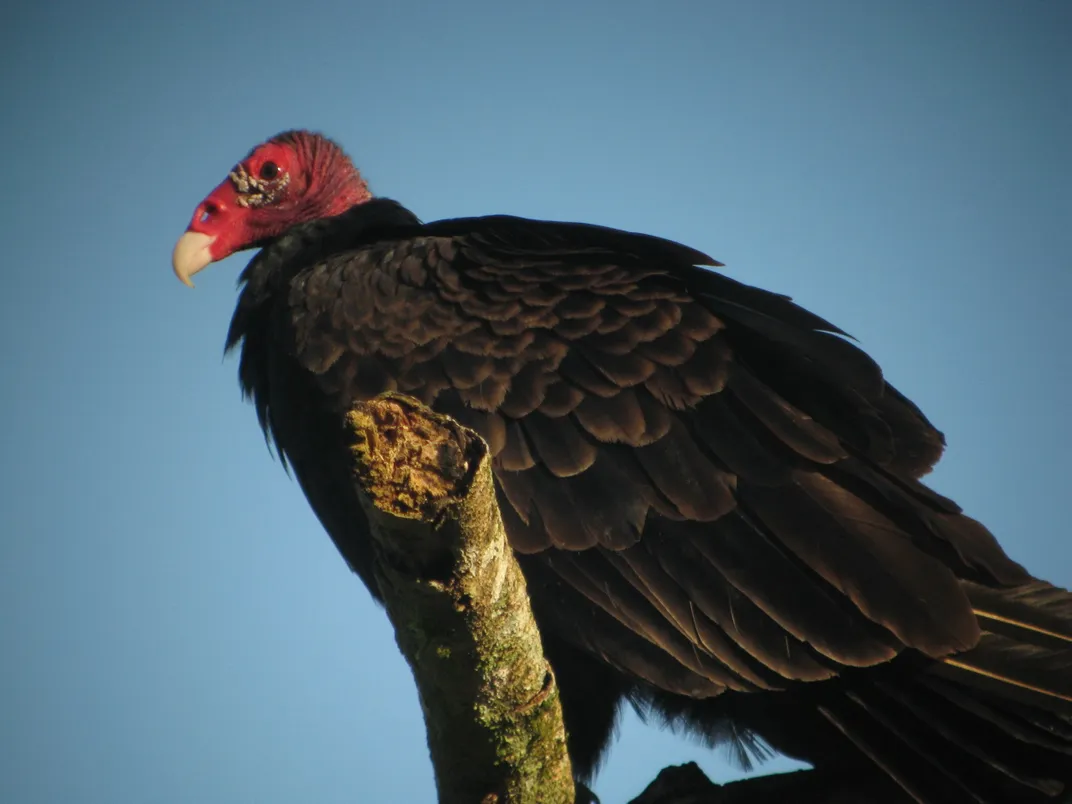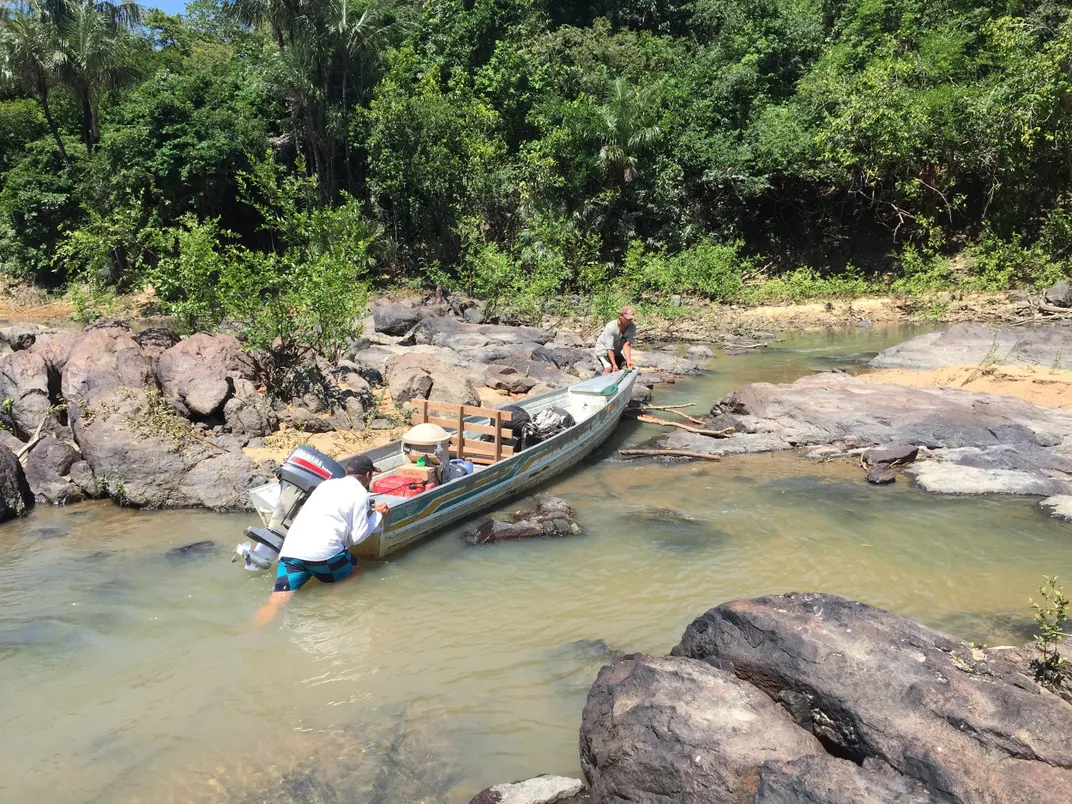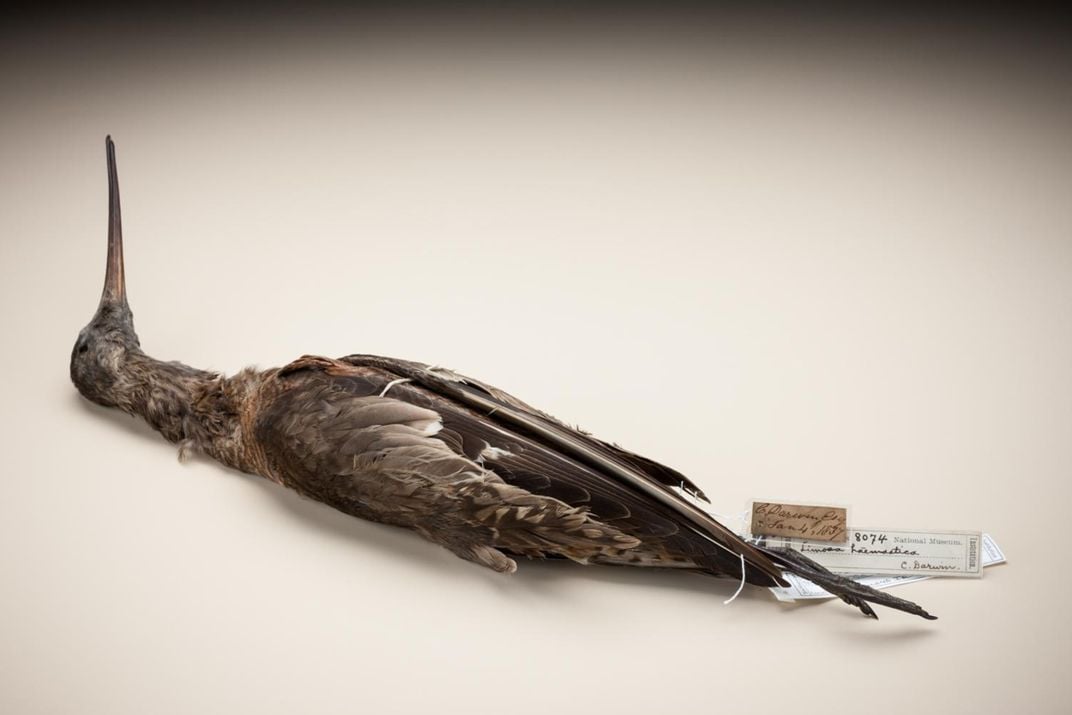NATIONAL MUSEUM OF NATURAL HISTORY
Meet the Scientist Studying Vulture Guts for Clues to Disease Immunity
We caught up with the Smithsonian’s curator of birds for “Meet a SI-entist” to talk about what makes vultures lovable, curating the National Bird Collection and co-organizing ornithology’s most ambitious project.
:focal(1536x990:1537x991)/https://tf-cmsv2-smithsonianmag-media.s3.amazonaws.com/blogging/featured/A_group_of_vultures_perched_on_a_tree..jpg)
All Gary Graves wanted to learn about as a teenager was birds. “I spent most of my time in high school studying birds rather than doing schoolwork,” he chuckled.
As a young biologist, he camped all over jungles and mountains looking for undescribed species of birds. Forty years later, he feels the same excitement working as a Research Zoologist and Curator of Birds at the Smithsonian’s National Museum of Natural History.
We caught up with Graves for “Meet a SI-entist” to talk about what makes vultures lovable, curating the National Bird Collection and co-organizing ornithology’s most ambitious project.
What do you do as a research zoologist and curator of birds at the museum?
Right now, I'm a curator in the Division of Birds. I supervise the collections management staff who care for the collection. The National Bird Collection is about 175 years old, and it's the official repository for bird specimens in the National Museum of Natural History. And then I research whatever interests me, essentially. I arrived in 1985, and I’ve worked on many different things in my career. Now, my research group spends most of its time looking at the microorganisms that live on and inside birds.

What excites you about working at the Smithsonian?
Not only do you have the freedom to pursue what you want to study, but you also have the time to follow through. In many research environments, you have to complete a project in a certain period of time. But what if you want to tackle a project that you can't finish in, say, three years? Many Smithsonian scientists have research programs that are 20, 30 even 40 years old. The ability to continue a thread of interest for a couple of decades is almost unheard of nowadays in academia.
How has COVID impacted your work?
I had to cancel travel, and I had to cancel a lot of fieldwork. But as a senior scientist, I have so many data sets in the pipeline already. This is not having an impact on me like it would have, say 30 years ago. I have enough backlogged material to sit in an office and write for probably the next 10 years.
You've done some work with vultures, and International Vulture Awareness Day is this weekend. What do you wish more people knew about them?

There are two different groups of vultures: Old World vultures and New World vultures. The Old World vultures have been in the news a lot lately. They're declining because drugs in livestock carcasses are poisoning them, especially in India and Africa. Some of those populations have plummeted by 95%, and many of those species are close to extinction.
The New World vultures are a separate group that are not even closely related, but they're ecologically similar in that they eat dead animals. The new world vultures include condors, like the California condor, and more common turkey vultures and black vultures.
Vultures in general have a poor public image. People associate them with death and disease. But these birds perform a really valuable public service in cleaning up roadkill. It's a hygienic thing, and it also saves a lot of money. If they didn't clean these carcasses up, somebody has to get them off the highway. And they clean up all the pathogen-spreading microorganisms that live in decaying carcasses that could pollute waterways.
What are you working on currently?
Vultures appear to be immune to harmful bacteria and viruses that they come in contact with in decaying flesh. We're in the preliminary steps of exploring their microbiome — trying to find out what kind of bacteria they’re exposed to, where it is on their body and signs of disease.
We’re discovering that the microbiome of vultures is extraordinarily rich. Although many of the bacteria on a vulture are also found on your skin and in your GI tract, vultures tend to have a more diverse microbiome than humans. And some of the most common gut bacteria in vultures are nasty things that are proven to cause disease in humans — like tetanus, gangrene and botulism.
We're also looking at the bacterial communities of the plumage, and I'm amazed at the kinds of things that we're finding. The bacterial communities of the feathers are unlike the communities known from any other biological system that has been explored at this depth. Vultures are exposed to a lot of UV light, and their plumage heats up when they're in the sun. So, the bacterial community on black plumage of turkey vultures is more like what you would find on a solar panel than on a biological substrate like human skin. They're dominated by bacteria that are highly resistant to radiation and dry, hot conditions. There's even an entire class of bacteria that we've discovered on vulture plumage that’s unknown to science. It does not have a name.

What are you most proud of accomplishing so far in your career?
I'm one of the co-organizers of a big genomics project called the Birds 10,000 Genome Project. There are seven co-organizers: two in the US, four in Denmark and one in China. And what we aim to do is to produce whole genome sequences of every living species of bird on the planet. That’s 10,400, give or take some. This B10k project is, I think, the single most important ornithological project to date. There are hundreds of people collaborating on this, and we have a massive group effort paper in press now at Nature.
There are about 240 avian families, and we have at least one representative from about 92% of families completely sequenced. About 40% of the genomes that will be published come from the Smithsonian collection. I started our avian tissue biorepository when I was a fresh hire back in 1986, so it's fun to see material that I collected 34 years ago being used now.
Do you have a favorite item in the museum's collections?
I think the most valuable specimens that we have are probably the oldest ones. These are biological time capsules from a different century. It tells me that it was living here at this time. It's got DNA in it. I can look at morphological features. I could look at its stable isotopes and tell something about its diet and about the climate it lived in. It's a historical archive.
We have a Darwin specimen, and we have a lot of Audubon specimens from the 1830s and 1840s. These things are kind of like holy relics in the museum world. We've got things like Martha, the last passenger pigeon, and large collections of species that are now extinct, like Carolina parakeets, and Heath hens and Labrador ducks.

What keeps you inspired after 35 years at the Smithsonian?
It’s so much fun working at a place that is filled with the world's experts on so many topics. It's kind of like having Wikipedia at your fingertips. I feel really lucky to live my professional career in the midst of so many smart people who are so interesting. That's what makes the Smithsonian great. If you get rid of the people, it's just a collection of things without the institutional knowledge. I was stunned by that aspect when I first showed up, and 35 years later I still have the same opinion: It has been fantastic to work around so many brilliant scientists.
Related Stories:
Get to Know the Scientist in Charge of Smithsonian’s 1.9 Million Mosquitoes
Meet the Scientist Studying How Cellphones Change Societies
Get to Know the Scientist Reconstructing Past Ocean Temperatures
Meet the Scientist Studying How Organisms Become Fossils

